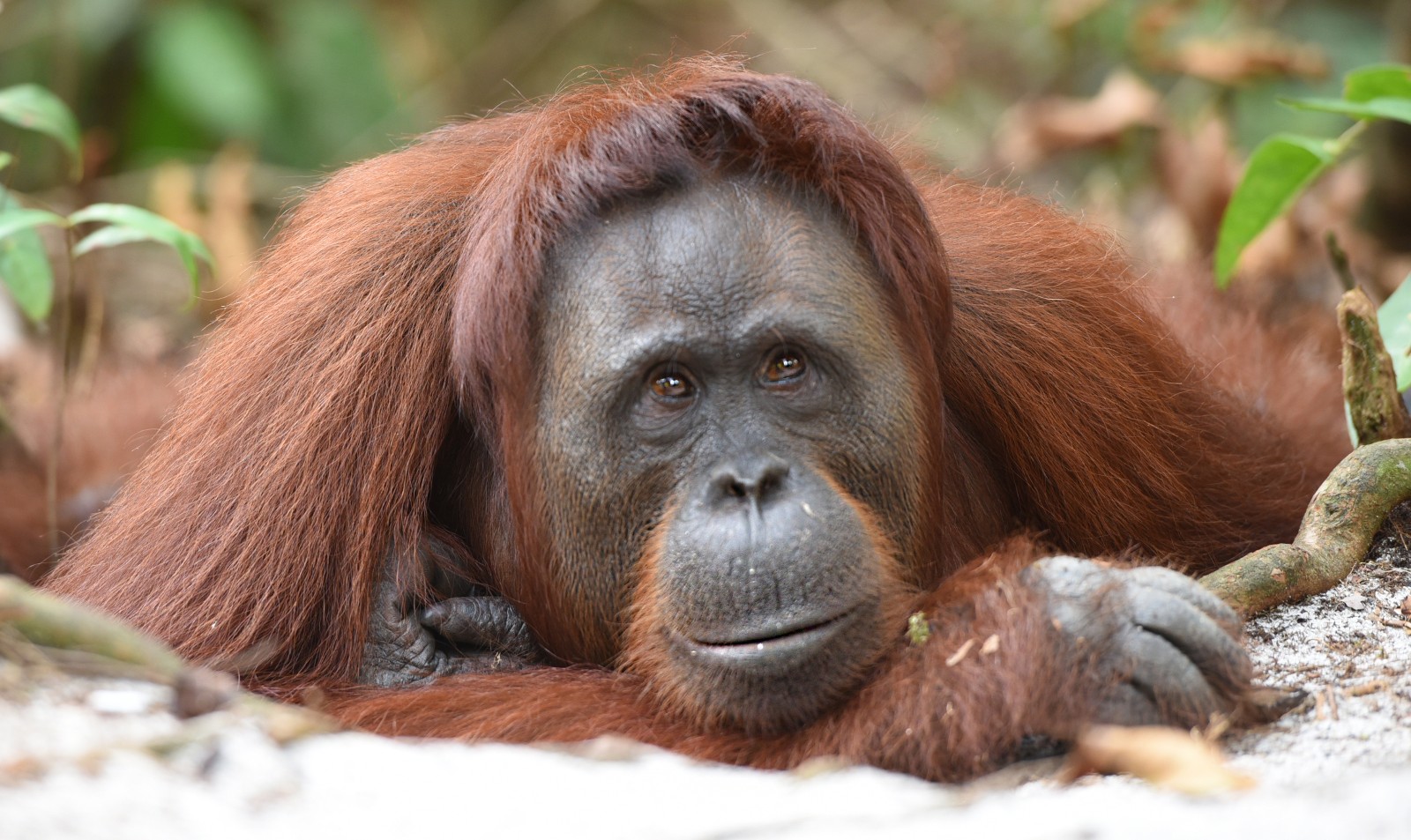16 fun & interesting orangutan facts for International Orangutan Day
Find out more about these awesome orange apes!

1. There are three species of orangutan
Since 2017 it has been confirmed that there are now 3 species of orangutans officially recognised. The Bornean orangutan, found only in Borneo; the Sumatran orangutan, found in the Northern Island of Sumatra in Indonesia; and the Tapanuli orangutan, found in the Batang Toru ecosystem in Sumatra, Indonesia.
2. Only 800 Tapanuli orangutans remain in the wild
It is estimated by the International Union for Conservation of Nature (IUCN) that there are only 800 Tapanuli orangutans left in the wild – maybe even less. This statistic makes them the most endangered of all the great ape species.
3. Orangutans are the heaviest tree-dwelling animal
Weighing between 50-90kg, orangutans are the largest arboreal (tree-dwelling) mammal – in fact, they spend most of their lives in the upper canopy of the forest.
4. An orangutan’s arms span over 7 feet!
An orangutan’s arm span is 2.2m, which is just over 7ft from fingertip to fingertip, helping them to move through the forest canopy.
5. Young orangutans stay with their mum for around 7 years
Young orangutans stay with their mum for the first 6-7 years of their life. In this time their mother will teach them valuable survival skills such as finding food, how to eat it and building nests. Female orangutans will continue to occasionally visit their mothers until they are about 18 years old.
6. Orangutans have the longest birth interval of any land mammal
Once orangutans have given birth, they will wait on average 7-8 years before giving birth again; this is due to the investment female orangutans put into raising their young. This also makes them more vulnerable to population decline as they cannot recover their numbers very quickly.
7. Adult orangutans develop flaps of fatty tissue – called flanges
Adult male orangutans develop flaps of fatty tissue on the sides of their faces when they’re around 35 years old, due to an increase in the hormone testosterone once they become fully mature. These flaps are called “flanges`.
8. Orangutans can live up to 50 years
Orangutans tend to live on average between 30-45 years, but occasionally some may live up to the age of 50.
9. Orangutans sleep in nests made within 10 minutes
It takes orangutans just 10 to 15 minutes to build a nest, which is where they will sleep at night. Orangutans will either build a new nest or re-enter an old nest each night.
10. Clever orangutans are expert at using tools
Orangutans will use sticks to remove seeds from fruit shells and to find insects in tree holes; they also use leaves to form an umbrella to protect themselves in the rain. However, most orangutans do not need to use tools to find food, as they are strong enough to break open fruit shells and insect nests on their own.
11. Fruit makes up most of an orangutan’s diet
Around 65-90% of an orangutan’s diet is composed of fruit. However, orangutans will also eat insects, tree bark and on rare occasions, meat.
12. Orangutans’ favourite food is the durian fruit
The durian fruit is the favourite food of orangutans. It contains lots of vitamins and nutrients whilst also being very tasty. The fruit gets its name from its spiky skin, with “Durio” meaning thorn in the Malay language. Orangutans will use their powerful jaw and fill their hands with leaves to pull open the thorny skin.
Durian fruit is extremely pungent and known as the smelliest fruit in the world, with its smell compared to raw sewage, sweaty socks and rubbish! It’s because of this that the durian fruit has been banned on public transport in Thailand, Japan, Singapore and Hong Kong!
13. Orangutans can eat soil and tree bark
Orangutans will also occasionally eat soil; it is thought by doing this they gain minerals that neutralise the acids and tannins they consume in their primarily vegetarian diet. Orangutans will also use their powerful jaw and teeth to peel bark off trees to find a layer underneath the bark called cambium tissue, which contains sugar and water. This is a back-up food for orangutans, eaten when they are unable to find fruit. Orangutans will usually choose tree species that have a thicker cambium layer, therefore meaning more water and sugar for them.
14. Orangutans are critically endangered – an estimated 100,000 Bornean Orangutans were lost between 1999 and 2015
All 3 species of orangutan are critically endangered. 100 years ago, there was thought to be more than 230,000 orangutans in total, now it is estimated that there are well under 100,000 orangutans left in the wild. While actual numbers are hard to confirm, this estimate includes roughly 57,000 Bornean orangutans, 13,000 Sumatran orangutans and less than 800 Tapanuli orangutans.
15. Orangutans share 97% of DNA in common with humans
Researchers have discovered that humans share approximately 97% of their DNA with orangutans, compared to chimps which share 99% of their DNA with humans.
16. Orangutan literally means person of the forest
The name “Orangutan” comes from the Malay and Bahasa Indonesia language. It translates to “person of the forest”, with “Orang” meaning “Person” and “Utan” meaning “forest.”
